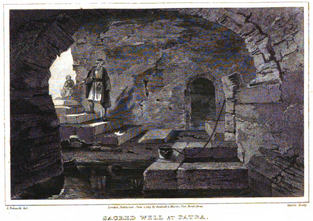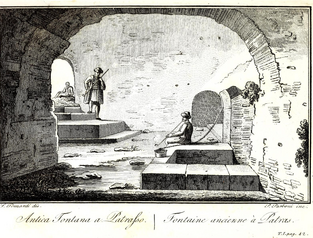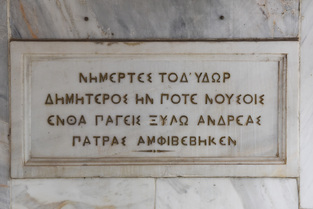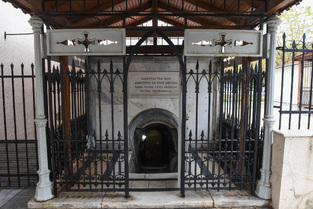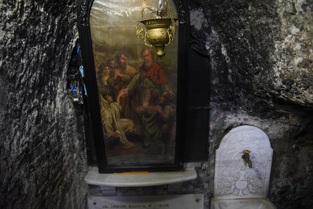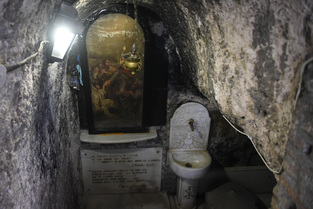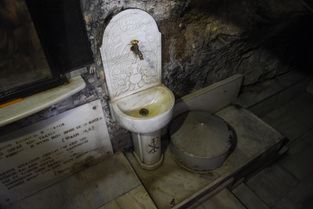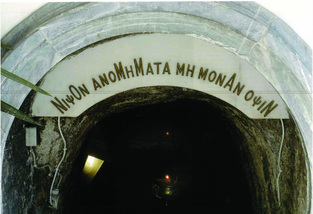SACRED SPRING OF SAINT ANDREW
Next to the old Chuch of Saint Andrew, there is a small domed cave where a water spring, known as the Sacred Spring (Hagiasma) of Saint Andrew (or the Well / Fountain of Saint Andrew), is located. According to tradition, the site next to the spring was the place of martyrdom of the Holy Apostle. The spring was known since antiquity, dedicated to the goddess Demeter, and functioned as an oracle.
The spring has been mentioned by numerous historians and travelers and remains one of the main pilgrimage sites for Christians visiting Patras from early Christian times to the present day.
Access to the spring is gained by descending a few steps. Directly above the entrance, a marble plaque bears the inscription: ΝΗΜΕΡΤΕΣ ΤΟΔ’ ΥΔΩΡ
ΔΗΜΗΤΕΡΟΣ ΗΝ ΠΟΤΕ ΝΟΥΣΟΙΣ
ΕΝΘΑ ΠΑΓΕΙΣ ΞΥΛΩΙ ΑΝΔΡΕΑΣ
ΠΑΤΡΑΣ ΑΜΦΙΒΕΒΗΚΕΝ
(Translation: This water is healing, once belonging to the goddess Demeter, where Andrew was nailed to the wood and watches over Patras). This plaque is a replica of the original, which was discovered in 1876 during a site cleaning. The inscription is attributed to Archbishop Germanos III of Old Patras.
Another inscription at the site features the well-known palindrome: "ΝΙΨΟΝ ΑΝΟΜΗΜΑΤΑ ΜΗ ΜΟΝΑΝ ΟΨΙΝ" (Wash away your sins, not just your face.). This phrase, which reads the same forward and backward, dates back to Byzantine times and was commonly found in sacred springs (hagiasmata). It was famously inscribed on the marble basin used for blessings in Hagia Sophia, Constantinople. Such inscriptions are traditionally placed near holy water sources.
In the past, pilgrims would draw water from the spring using a small container lowered into the well with a metal chain. In recent years, a fountain has been installed to make access to the holy water easier for visitors.


